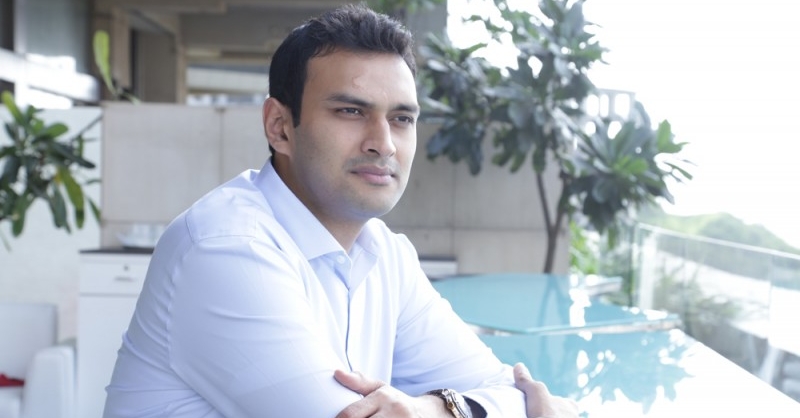Logistics News ME interviewed Dhruvil Sanghvi, Founder and CEO of LogiNext, one of the biggest global SaaS (software as a service firm) leaders in automation solutions – with a primary focus on supply chain and logistics. Launched in 2014, LogiNext promises to provide full-stack logistics services, including first-mile, middle-mile, and last-mile. With the expanding e-commerce, start-ups, CEP, and food delivery app industries, these logistically operating companies tend to open doors to more significant opportunities for expansion. Here’s what Dhruvil Sanghvi has to say on shaping the logistics industry…
- Tell us about LogiNext and your logistics and supply chain solutions.
LogiNext is a SaaS-based delivery management platform that enterprises across industries can use- F&B, Retail, CEP (Courier, Express & Parcel), FMCG and Transportation. LogiNext Mile is the flagship product used by brands to digitise, optimise, and automate logistical operations. Be it first-mile movement from a warehouse to a hub, middle-mile movement between hub to hub or the last mile from hub to the end customer, the LogiNext platform can be used to simplify end-to-end logistics.
- What are the key technologies influencing the logistics sector today?
Several technologies like IoT, autonomous robotics, artificial intelligence, and machine learning influence logistics. Areas like inventory management with capacity utilisation, real-time visibility, automated order allocation with route optimisation and delivery driver management are specific spaces where technology has transformed. All these supply chain technologies help digitise processes and automate manual processes to increase efficiency.
- Across the delivery chain, the last mile is the job’s most expensive and time-consuming segment. How can technology make the last mile affordable?
The last mile accounts for about 53% of the entire delivery chain. There are several reasons for alterations, and technology is aid with several reasons. Firstly, the end customer is away/failed delivery attempt: 5% of all orders fail to get delivered on the first attempt. Technology can support fixing this with a driver chat or real-time communication feature whereby a shopper can inform the driver or dispatcher that they aren’t home and provide an alternative time window. Secondly, many brands must understand how many drivers are required for efficient deliveries. A hybrid fleet management technology solves this issue by forecasting demand, showing pre-order ETA, and positioning drivers in high-order density and dynamic order allocation areas. Moreover, for a better customer experience, implementing technology can catalyse a better delivery experience – this can lead to customer retention and repeat orders as the system already knows customer preferences. Lastly, it suffices drivers to optimise delivery with a route optimisation algorithm, as it takes several patterns like weather conditions, traffic conditions and customer preferences to assign and deliver orders the most optimum way.
- What is LogiNext’s solution to remedy high last-mile delivery costs?
LogiNext Mile is a DIY platform that can be set up in minutes. There are hundreds of APIs through which an enterprise can use LogiNext on top of their existing systems without any hassle. Apart from this, the carrier integration marketplace is a unique feature of the LogiNext platform, which allows brands to add carriers at the click of a button, enabling them to deliver much more efficiently in the last mile.
- What are some of the challenges LogiNext faces today?
One of the logistics sector’s biggest challenges is digitisation and change management. We are putting in much effort to highlight the benefits of technology and how it can positively impact businesses. Digitisation and sustainability are on the agenda of many enterprises, but more emphasis is required, and brands need to move quickly to stay in line with customer expectations and the realities of modern times.
- Compared to the rest of the world, how does the Middle East fare regarding logistics and supply chain efficiencies?
The Middle East is one of the fastest-growing regions for adopting technology in the supply chain. The North American market is the most developed, but the Middle East and APAC are catching up fast, especially with region-specific innovations. We expect the Middle East to lead the way regarding premium shipping.
- In your opinion, how can the logistics sector become more efficient – especially as we’re seeing a high demand for same-day/ 60 minutes delivery times?
Technology and automation are the way forward. Same-day delivery and quick commerce require a lot of information and data based on which efficiency can be improved. Forecasting demand, accounting for peak hour sales and fluctuations, advanced route optimisation and the rise of dark stores are some trends paving the way for more efficiency in the logistics sector.
- Lastly, what’s next for LogiNext in the region?
We have more than 20 enterprise customers in the Middle East region, and the number is growing fast. We have an office in Dubai, and we plan to double down our regional efforts to deliver more success stories. The Middle East is an essential market for growth for LogiNext, and we’re actively hiring and increasing customer support in the region. We aim to grow at least 100% in the coming year in the Middle East.




